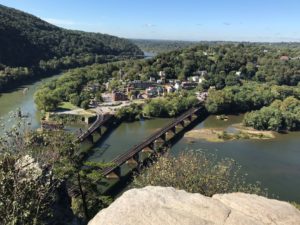 President Lincoln took a special train to Harpers Ferry on October 1, 1862. I drove my car to the National Park Service visitors center on October 1, 2021. Lincoln reviewed the troops on Bolivar Heights. I climbed to the overlook on Maryland Heights. One hundred and fifty-nine years separated us, but I still felt his presence.
President Lincoln took a special train to Harpers Ferry on October 1, 1862. I drove my car to the National Park Service visitors center on October 1, 2021. Lincoln reviewed the troops on Bolivar Heights. I climbed to the overlook on Maryland Heights. One hundred and fifty-nine years separated us, but I still felt his presence.
Lincoln was anxious about his commanding general, George McClellan. McClellan had brought a military success, of sorts, near Antietam creek just a few weeks before. More of a draw than a clear-cut victory despite McClellan’s staff finding Confederate General Lee’s plans wrapped around three cigars, it had been enough for Lincoln to issue his Emancipation Proclamation on September 22nd. Lincoln was not pleased with McClellan’s overall performance. McClellan complained incessantly that the enemy had decisively more troops, even when it was McClellan with the distinct numerical advantage. So Lincoln was coming to talk to McClellan in person.
Around 6 a.m. on the first day of October, Lincoln and entourage left Washington on a special train. Joining him were General McClernand, Ward Hill Lamon, Ozias Hatch, John Garrett (president of the Baltimore & Ohio Railroad) and others. Arriving at Harpers Ferry at noon, Lincoln meets with General Sumners until General McClellan finally arrives in the early afternoon. McClellan and Lincoln visit the troops at Bolivar Heights. That night, Lincoln spends the night in Harpers Ferry. The next morning he visits more troops on the Maryland Heights and moves to McClellan’s headquarters for a strategic discussion and critical job review. While there, several iconic photos are taken by Alexander Gardner. A month later, Lincoln would finally relieve McClellan from command, permanently this time.
My visit began around 8 a.m. for a drive of just over an hour. The day was about as perfect as could be, with no clouds and a high temperature in the low 70s. A fog enveloped the valley as we approached, but quickly disappeared once I arrived in the lower town of Harpers Ferry. John Brown’s Fort was getting a paint job as I headed for the Maryland Heights trailhead. Not only is Harpers Ferry the intersection between Maryland, West Virginia, and Virginia, it’s also where three trails intersect – Maryland Heights, the C & O Canal Towpath, and the Appalachian Trail. The railroad and foot bridges over the Potomac River (with the Shenandoah River sliding in from the right) lead into the gaping maw of the tunnel under the heights. A short walk up the towpath brought us to the trailhead. A constant uphill hike of about 1200 feet elevation gain brought us to the Heights overlook, where we snacked and replenished electrolytes before hiking back down to the town. A delightful lunch on the patio of the Coach House Grill capped a perfect visit.
A week earlier I had toured Williamsport and Falling Water, another area not far away that had hackled Lincoln. After the decisive Union victory in Gettysburg, Lincoln was displeased with General George Meade for his failure to attack and destroy Lee’s army, giving it time to cross the Potomac River upstream from Harpers Ferry. Lincoln wrote a blistering letter berating Meade, his failure prolonging the war another two years instead of ending it in late 1863. Lincoln never sent the letter. Having spewed his anger onto the page, he rethought the wisdom of chewing his arguably one of his better generals. Luckily for us, he saved it for posterity “never signed, never sent.”
Eventually Lincoln would find likeminded generals in Ulysses S. Grant, William T. Sherman, and Philip Henry Sheridan, along with Meade, who would be key to closing out the rest of the war. But his trip to Harpers Ferry and Antietam was to reassess his commander. McClellan was found wanting, and Lincoln fired him.
Unlike Lincoln, my trip to Harpers Ferry was a total success, and despite the sore muscles afterward, a wonderful experience.
[David J. Kent has been “Chasing Abraham Lincoln” for the last several years, with the COVID pandemic putting much of it on hold. With most responsible people now vaccinated, David will be doing more road trips on the trail of Lincoln. Stay tuned.]
David J. Kent is an avid science traveler and the author of Lincoln: The Man Who Saved America, in Barnes and Noble stores now. His previous books include Tesla: The Wizard of Electricity and Edison: The Inventor of the Modern World and two specialty e-books: Nikola Tesla: Renewable Energy Ahead of Its Time and Abraham Lincoln and Nikola Tesla: Connected by Fate.
Check out my Goodreads author page. While you’re at it, “Like” my Facebook author page for more updates!



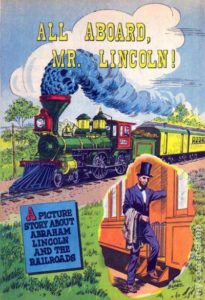 On June 23, 1854, Abraham Lincoln draws on his account at the Illinois Central Railroad. The ICRR had been a repeat source of work for the Lincoln, who had been focusing on his legal career after being relegated to the sidelines politically. He would not be in an elected position for eleven years. He did a variety of work for several railroads, but the ICRR by far was the most prolific and profitable. Still, he wasn’t making much money per case.
On June 23, 1854, Abraham Lincoln draws on his account at the Illinois Central Railroad. The ICRR had been a repeat source of work for the Lincoln, who had been focusing on his legal career after being relegated to the sidelines politically. He would not be in an elected position for eleven years. He did a variety of work for several railroads, but the ICRR by far was the most prolific and profitable. Still, he wasn’t making much money per case.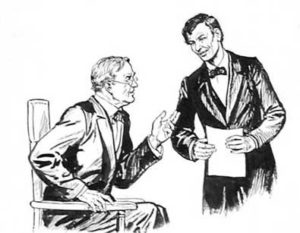 On September 10, 1856, Abraham Lincoln wrote an affidavit in a medical malpractice case that involved chicken bones. It was the first medical malpractice case in McLean County.
On September 10, 1856, Abraham Lincoln wrote an affidavit in a medical malpractice case that involved chicken bones. It was the first medical malpractice case in McLean County. I see you printed that long letter I sent you a spell ago—I’m quite encouraged by it, and can’t keep from writing again.
I see you printed that long letter I sent you a spell ago—I’m quite encouraged by it, and can’t keep from writing again.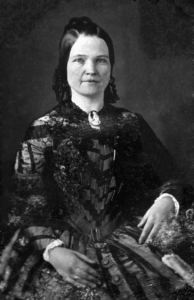 On this auspicious date in 1844, Mrs. Lincoln bought material to make corsets. Six yards of “gimp,” which was a strong twisted silk, wool, or cotton (not to be confused with the plastic form of gimp I used in Boy Scouts), along with ample amounts of lace. Presumably she already had whalebone or simply used over-starched fabric for stiffness. As critical as this was for containing the spreading remnants of Robert’s birth the previous year, this was only one of many important events happening on
On this auspicious date in 1844, Mrs. Lincoln bought material to make corsets. Six yards of “gimp,” which was a strong twisted silk, wool, or cotton (not to be confused with the plastic form of gimp I used in Boy Scouts), along with ample amounts of lace. Presumably she already had whalebone or simply used over-starched fabric for stiffness. As critical as this was for containing the spreading remnants of Robert’s birth the previous year, this was only one of many important events happening on 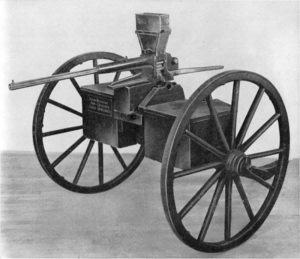 On August 17, 1861, Abraham Lincoln witnessed an exhibition of what Lincoln dubbed the “coffee mill gun.” Lincoln was always pushing for modernized weaponry beyond the standard muskets, which were inaccurate and slow to reload. He pushed Ordinance Chief James Ripley to put into service various breechloaders, rifles, carbines, and repeaters.
On August 17, 1861, Abraham Lincoln witnessed an exhibition of what Lincoln dubbed the “coffee mill gun.” Lincoln was always pushing for modernized weaponry beyond the standard muskets, which were inaccurate and slow to reload. He pushed Ordinance Chief James Ripley to put into service various breechloaders, rifles, carbines, and repeaters.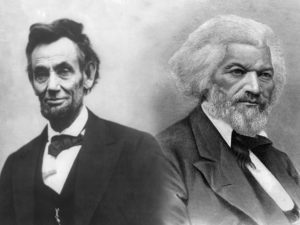 On August 10, 1863, Abraham Lincoln met with Frederick Douglass in the White House. Douglass had arrived unannounced, accompanied by Kansas Senator Samuel Pomeroy. They found the waiting room filled with people seeking an audience with the president, so Douglass, dressed in a dark suit on this sweltering August morning, assumed he would have a long wait. Instead, Lincoln’s secretary John Hay came quickly out to greet him and usher him into the inner sanctum.
On August 10, 1863, Abraham Lincoln met with Frederick Douglass in the White House. Douglass had arrived unannounced, accompanied by Kansas Senator Samuel Pomeroy. They found the waiting room filled with people seeking an audience with the president, so Douglass, dressed in a dark suit on this sweltering August morning, assumed he would have a long wait. Instead, Lincoln’s secretary John Hay came quickly out to greet him and usher him into the inner sanctum.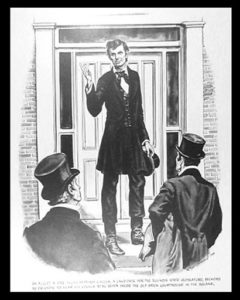 On August 4, 1834, at the age of 25, Abraham Lincoln was elected to the Illinois State Legislature. This was two years after he ran the first time – and lost.
On August 4, 1834, at the age of 25, Abraham Lincoln was elected to the Illinois State Legislature. This was two years after he ran the first time – and lost.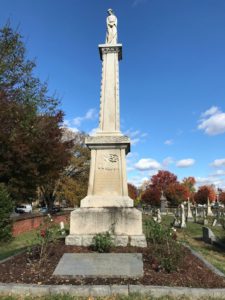 On July 27, 1864, Abraham Lincoln called on Edwin Stanton to increase the pay of women working in the cause of the Civil War. He wrote:
On July 27, 1864, Abraham Lincoln called on Edwin Stanton to increase the pay of women working in the cause of the Civil War. He wrote: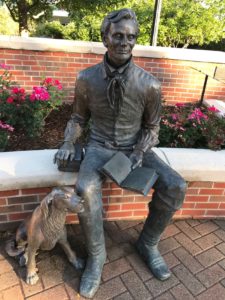 Famously, Abraham Lincoln wrote that he the “aggregate of all his schooling did not amount to one year.” He added that he “was never in a college or Academy as a student; and never inside of a college or academy building til since he had a law-license.” And yet, Lincoln is a college guy, of sorts.
Famously, Abraham Lincoln wrote that he the “aggregate of all his schooling did not amount to one year.” He added that he “was never in a college or Academy as a student; and never inside of a college or academy building til since he had a law-license.” And yet, Lincoln is a college guy, of sorts.






